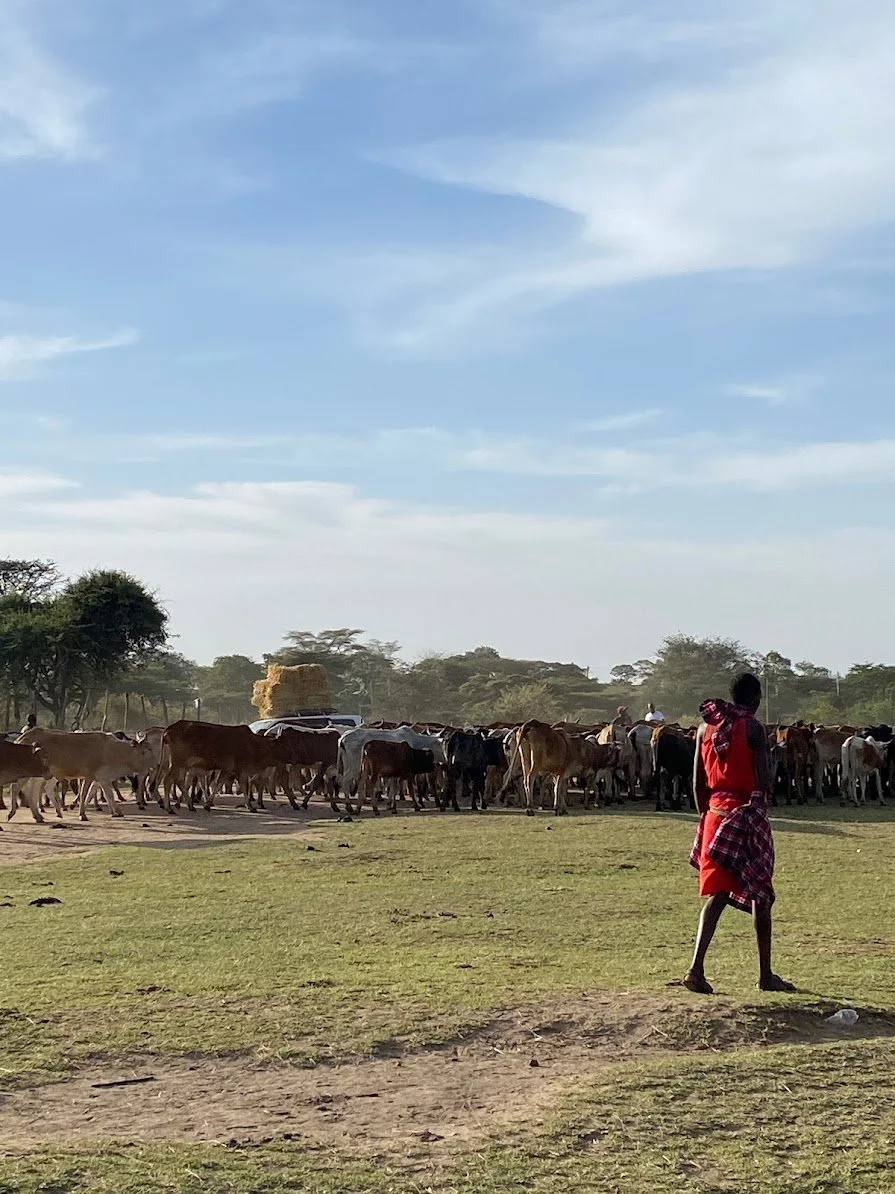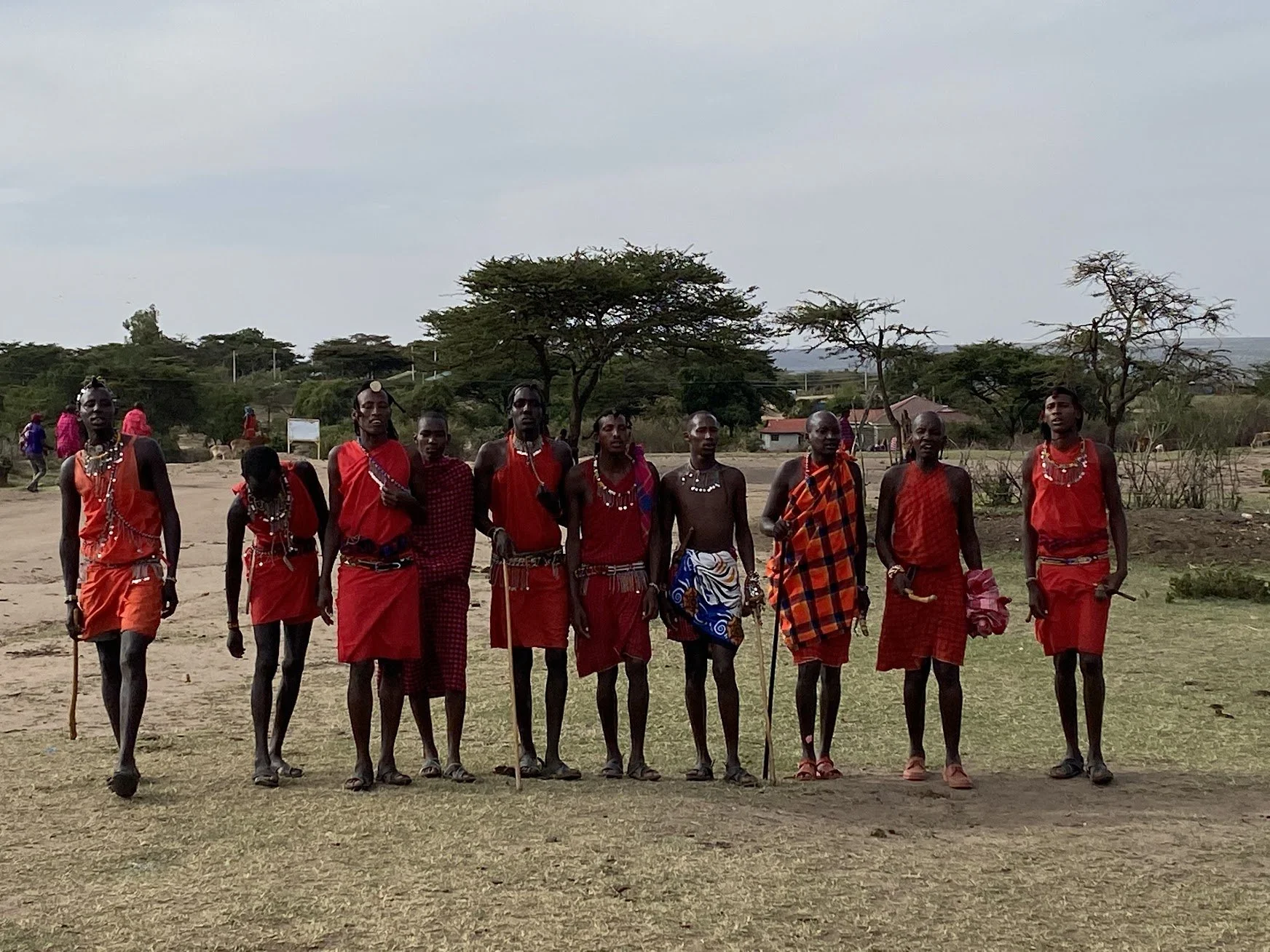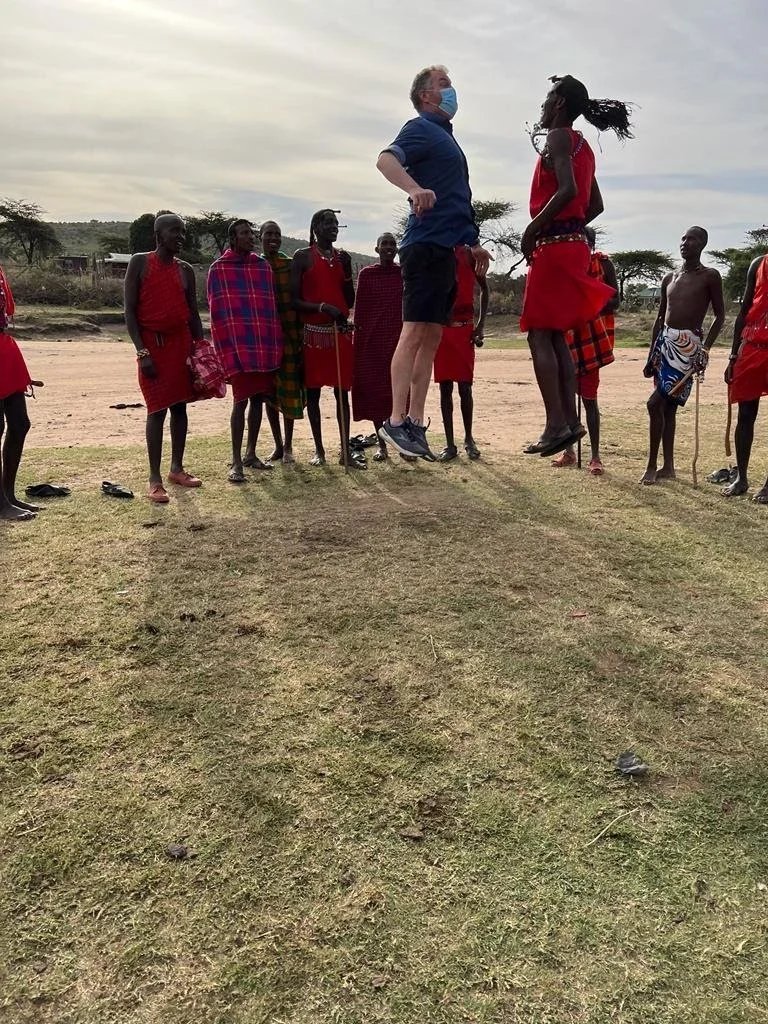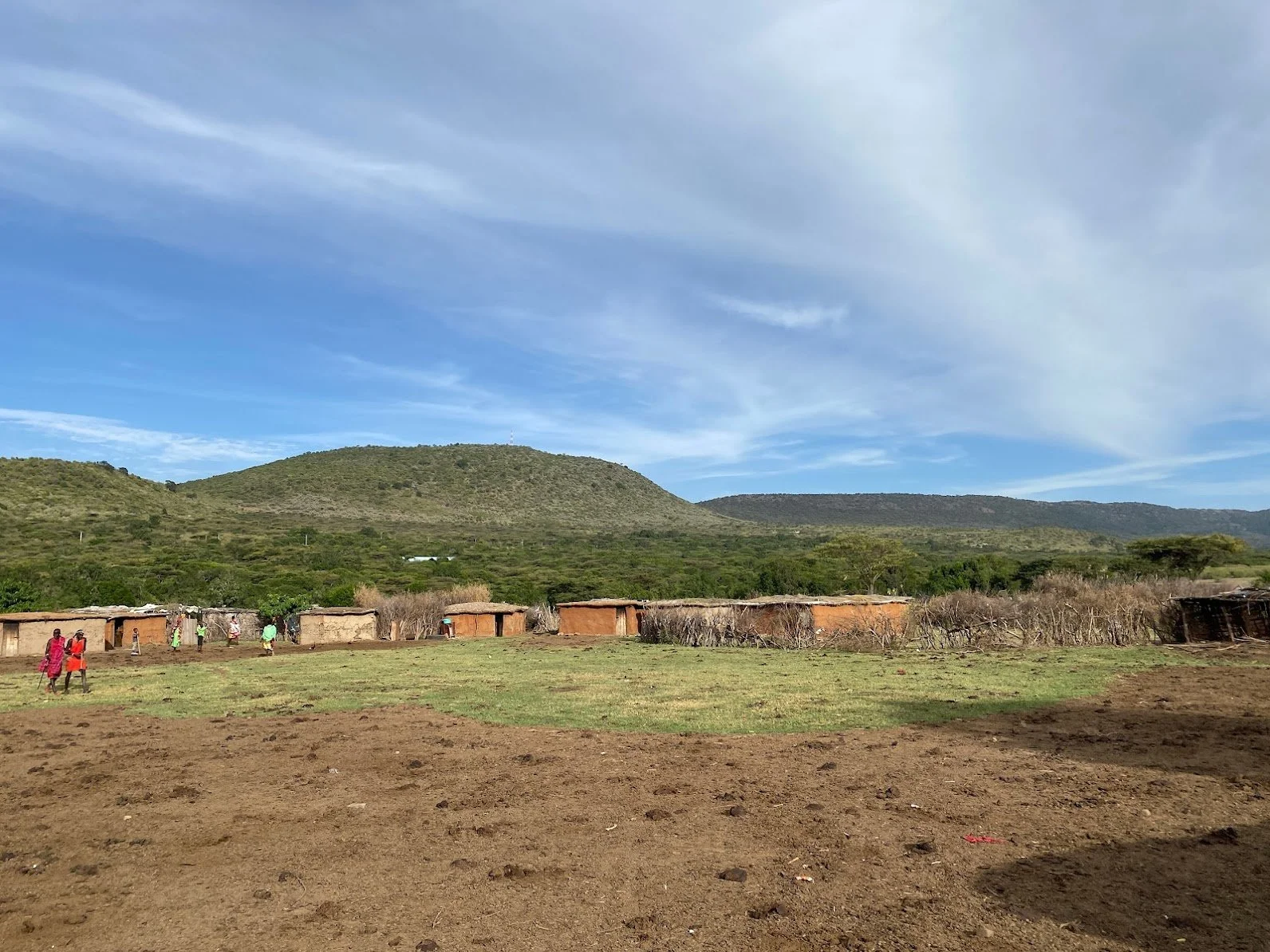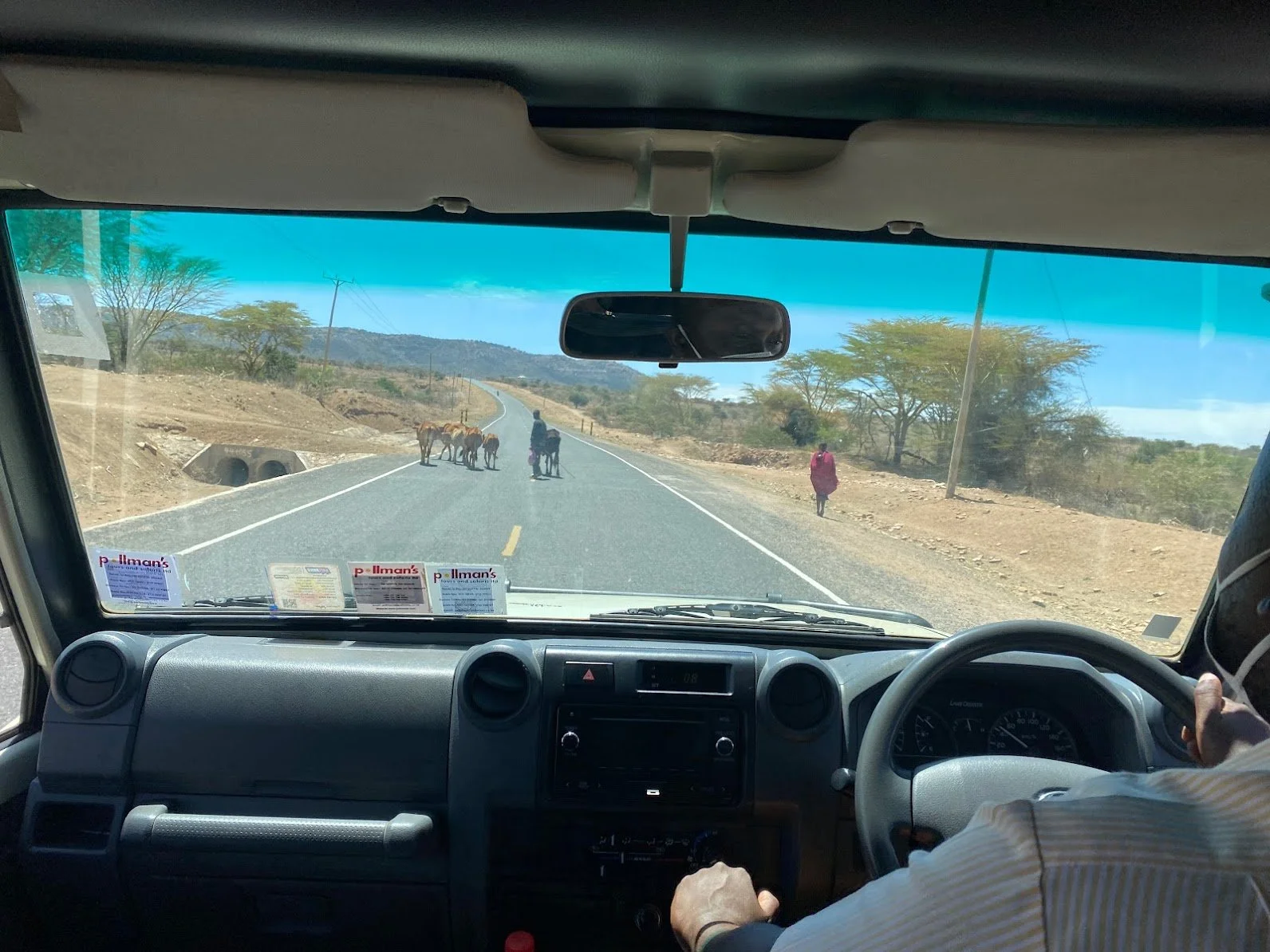The Tallest People in the World
A people on the move
The Masai occupy an almost mythical position within the East African tribal context because of their fierce adherence to a traditional pastoral way of life in the face of modern society. On our way south from Nairobi, we passed both traditional Masai temporary settlements & warriors with herds of thin cows (there had been a long drought) and good-sized town of the "Modern Masai?
The Masai are also famously tall. At our first lodge, once I established my willingness to be laughed at through my persistent attempts at Swahili, the various Masai employees kept coming to stand next to me and calling their friends to do the same.
We went to a Masai village one afternoon. Because we were a most alone at the lodge, one of the bartenders had basically adopted me, helping me with Swahili and generally shepherding our family around. When he heard that we were visiting a Masai village, he took the twins and I aside and armed us with some questions to ask (ask about grandparents and sleeping arrangements), and then said, "I come from a village like that. When you are back, come find me."
When we pulled up, the warrior who greeted as was surprisingly short. He introduced himself as Peter and also his given name, which was something like Raya. He introduced both male and female dancing groups who would welcome us to the village. the male group was full of teenagers, performing with that barely concealed eye-roll that translates across every culture and custom (more about that here).
Once welcomed, Peter took us on a tour of the village. If Masai in the savannah walking with their herds & protecting them with their sticks and spears was inspiring, conditions in the village were appalling. I tried to keep an open mind, but cow dung and flies were everywhere. Water was carried to the houses, mostly by young women, and the houses had no electricity. Interior light was provided by a very small hole in the walls that also served as a chimney. The walls and beds were made of a mixture of clay and cow dung.
But no one looked malnourished or unhappy.
Peter proudly told us how many children were in school now, which impacted how far the village would migrate, because they wanted the kids to have a consistent experience. He told us that while he was one of a small number of his peers who graduated secondary school, he expected almost all of the small children to do so.
Theresa kept asking why there wasn’t a separate, nearby enclosure for the cows, which would reduce the amount of cow-dung underfoot while still allowing for protection of the herds.
Back at the lodge, I beelined for the bar, where Johannes was waiting for me. For more than an hour he talked to me about growing up in his village, about encountering electricity and running water at school, and about his classmates’ descriptions of these things in (some of) their homes.
When he left for university, he asked the blessings of the village elders - for a limited time -and he pledged to continue to support the village and the elders, which he and his wife continue to do. As I asked questions, he periodically called over other people to tell me their versions of this story, and without exception, they told me that they also continue to ask for (and receive) the blessings of the elders at intervals. Their firmly believed that no one could be happy, no matter what they earned or owned, unless their transition was made in a way that honored their heritage & family.
Johannes's wife is a teacher in a nearby school focused on the Masai, and she predicted that 50% of the Masai would no longer live in the villages within ten years.
Their combined salaries allowed them to buy a modern house and they offered one to his parents, who refused. I would guess that those who do will be like the Amish, prosperous in their own way and on their own terms, but apart.
It will be fascinating to see how the Masai culture changes, or doesn’t, over the next generation.
Back in Nairobi, Peter, friend of our friend Father Mitchell of the Earth and Spirit Center in Louisville, told a similar story. He moved into an apartment in Nairobi with his 'sister to work as a driver a tour guide. His village, where his father still lives, has a house for his father, now with electricity, and houses for each of his three wives. There are also houses for Peter's generation, which none of tan occupy full-time, but all return to regularly
Each time Peter has a guiding trip like ours, he invests the tip in an improvement. Three years ago it was a garden, last year cows, this year a well. As a young professional, he lives a split existence similar to most of the people we got to know: one foot in a way of life that stretches back generations and one foot in a modern economy.
Peter and his son Joe took us to church with them
I write this in a hotel room in downtown Nairobi, where skyscrapers are plentiful, and billboards are full of ads for mortgages and fashionable stores. The building across from us is surrounded by a fence and has a guarded gate. It’s in a nice neighborhood. All day people bring water in and out in the ubiquitous yellow containers common across the country because they cannot drink from the taps. Out the other window, I can see three buildings under construction and ten tiny shops that speak of entrepreneurs just getting by. The guards that proliferate the grocery story nearest to us speak of desperation and the potential for violence.
It's a dynamic, wonderful, difficult thing to witness, and I think I will spend years trying to assimilate it all.

